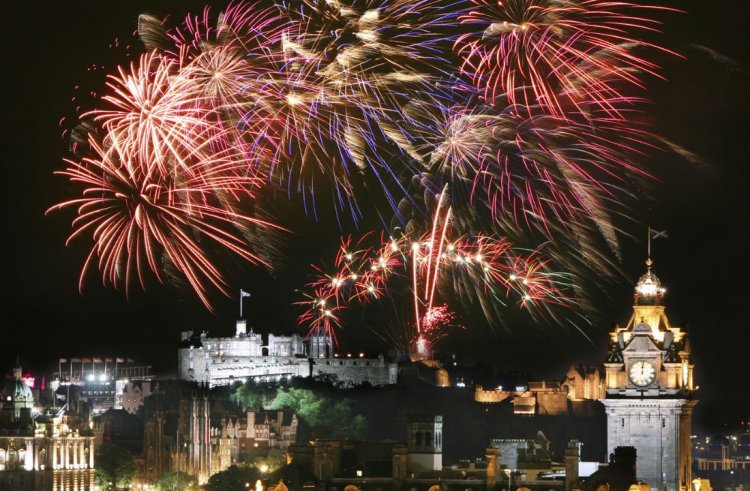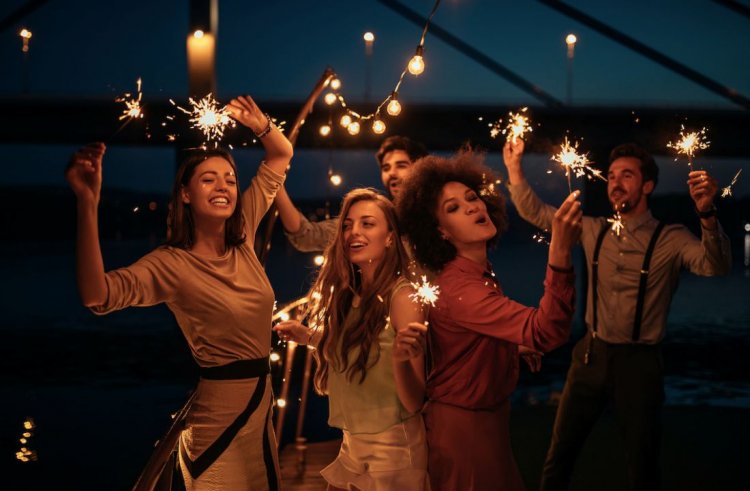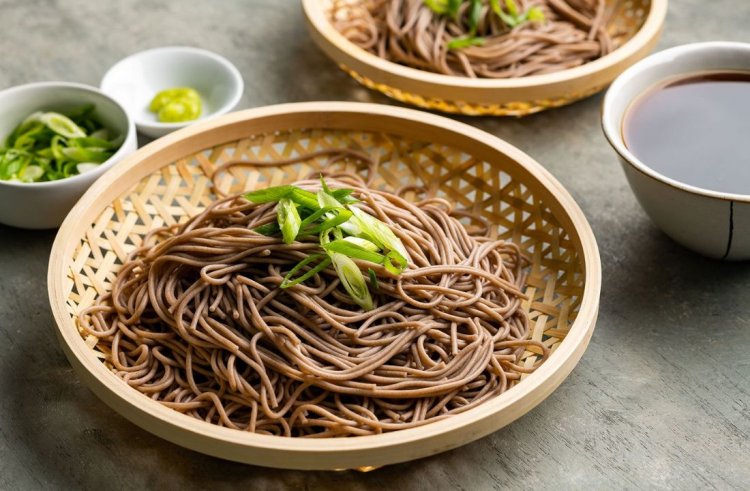The most exciting New Year's Eve customs
The most exciting New Year's Eve customs
Updated on August 19, 2022 14:16 PM by Dhinesh
The first recorded celebrations in honor of the arrival of a new year date back 4,000 years to ancient Babylon. The first new moon after the vernal equinox— the day in late March with an equal amount of sun and darkness— marked the beginning of a new year for the Babylonians.
Egyptians celebrate new year's eve with a festival known as Wepet Renpet, which translates as "year's opening." Wepet Renpet is a Tradition on New Year's eve. The New Year was celebrated with feasts and special religious rites as a time of rebirth and reinvigoration.
These pagan customs were directly transmitted to ancient Greece from the ancient Mesopotamian city of Babylon. Before this contact, the ancient Greeks were not known to welcome the New Year other than by acknowledging the visible new moon as the start of each new month and marking the "sickle of the new moon."
This day was also celebrated by the Romans, who threw parties with food, drink, and dancing. Constantine the Great (272 - 337), the first Christian Roman Emperor, followed the Julian Calendar but made New Year's Day a day of prayer and fasting. Christians were encouraged to use the day to start living better lives.
Here is the list of the most fascinating traditions On New year's eve
Light sparkles

You've probably heard the phrase "shiny new year." That's why everyone dresses up in sequins on December 31st. The purpose of wearing something sparkly is to celebrate new year's eve with bright and exciting possibilities. It's to ensure that the coming year is filled with joy.
Fireworks: It is believed that bodily noises and fireworks on New Year's Eve originated in ancient times when noise and fire were thought to dispel bad spirits and bring happiness. Fireworks are credited with being invented by the Chinese, who use them to spectacular effect in their New Year's celebrations.
Add Block
Times Square Ball
The ball, which is located on the roof of One Times Square, is an influential part of a celebrated New Year's Eve celebration known as the ball drop, in which the ball devolves down a specially designed flagpole starting at 11:59:00 p.m. other sources and resting at midnight to signal the start of the new year.
The concept of a ball "dropping" to mark the passage of time predates the celebration of New Year's Eve in Times Square. In 1833, the first "time-ball" was managed to be installed atop England's Royal Observatory in Greenwich.
The New York Times newspaper was about to open its new headquarters in Longacre Square, the city's second tallest building, in 1903. Adolph Ochs, the paper's owner, decided to mark the occasion with a midnight fireworks display on the building's roof on December 31, 1903.
Also Read: New Year Traditions from Around the World - #HappyNewYear
Scotland-style, sing 'Auld Lang Syne
Essentially, "Auld Lang Syne" reminds us that the future is doomed if we do not cherish our past relationships and stay in touch with those who have shaped us into who we are today. As a result, "Auld Lang Syne" sometimes is sung at social gatherings such as wedding ceremonies or funerals.
It is sung to celebrate New Year's Eve in Scotland and other English-speaking countries to say adieu to the previous year. Rhetorical Devices and Rhyme Scheme: This song's five stanzas and chorus all follow the same simple rhyme scheme - ABCB.
Add Block
Sprinkle Salt

Turkey's Salt - On New Year's Eve, at midnight, people in Turkey sprinkle salt on their doorsteps for good luck. Families also sprinkle sugar outside of their homes to promote a lucky future. Arroz con Gandules, pasteles, barbecued pig, coquito, and rice pudding are served as part of the celebration.
Add Block
Kissed at midnight
The first person you meet in a new year, and the nature of this encounter, set the tone for the rest of the year, according to English and German folklore, which may explain why people kiss at midnight to celebrate New Year's Eve. A kiss should deepen any bonds you hope to keep going in the future.
Also Read: Unbelievable Traditions that are followed all over the World on New Year's Day of 2022
Remember everyone, that a kiss on New Year's Eve is said to bring luck to a new relationship.
Spanish eat 12 grapes at once
The Twelve Grapes, also known as "the twelve grapes of luck," are a Spanish custom that involves eating a grape with each of the twelve clock attacks on December 31 to ring in the New Year. Every grape and clock bell ringing signifies one of the upcoming twelve months.
The "twelve grapes" custom originated in Spain, where it is known as "The Twelve Lucky Grapes" or "The Eighteen Lucky Grapes". People eat one green grape for each of the upcoming twelve months to bring luck for the following year.
On Nochevieja (also known as "Old Night," New Year's Eve), you must begin eating the twelve grapes at the first stroke of midnight as one year ends and another begins. Additionally, you have to keep eating because it takes about twelve seconds to finish each grape after each toll of midnight.
Add Block
Burning Scarecrow
These effigies are also burned at midnight to celebrate New Year's Eve as a symbolic purification. This Ecuadorian custom is thought to drive away any misfortune from the previous year. Making paper scarecrows and burning them at midnight is a tradition practiced by families in Ecuador that are believed to rid the new year of all the bad luck from the previous year and pave the way for good fortune.
Also Read: The truth behind “Trick-or-Treat” tradition
In Ecuador, many people burn old photographs that conjure up unpleasant memories as well as paper scarecrows that have been filled with paper at midnight on New Year's Eve. According to an ancient custom, doing so is believed to help drive away any misfortune or negative events that occurred over the previous year.
Add Block
Japan soba noodle cuisine

The Japanese celebrate New Year's Eve, or Hisoka, by reflecting on the previous year and welcoming the new one while chowing down on a bowl of hot soba noodles known as Toshikoshi Soba, or year-crossing noodles.
To celebrate New Year's Eve, Toshi Koshi soba is customarily consumed the night before the new year. Buckwheat noodles in a soup with a variety of garnishes make up the dish. The dish may occasionally be simply topped with some green onions, or it may include garnishes like tempura, nori, eggs, or spinach.
The hour just before midnight on December 31 is when soba is most frequently consumed. Having said that, depending on the region or family tradition, there may be customary time differences.
Throwing White Flowers Into the Ocean
To celebrate New Year's Eve, Brazilians offer white flowers to the Goddess of the Sea by tossing them into the water. On New Year's Eve, many Brazilians observe the custom of donning white and offering white flowers and candles to Iemanja, the animist Afro-Brazilian Goddess of the Sea.
Add Block
Make a toast to memory
"May we learn to live well and may we live well to learn." "May the best things in your past be the worst things in your future." "To love, laughter, and a happily ever after," is the saying. "May we always find joy at the moment, be thankful for the past, and be eager for the long term."
The New Year's toast presents the ideal chance to commemorate fresh starts with loved ones. The custom of raising a glass in celebration has its roots in ancient practices where a toast promoted a long life while also serving as a symbol of hospitality and honor.
Also Read: What are Christmas traditional foods? And ya! please count calories on Christmas Days!
Add Block
Set goals for the new year
A New Year's resolution is a choice of whether to take action or not to achieve a personal objective or break a bad habit. It occurs at a time when people reflect on the previous year and make resolutions to better themselves as the new year approaches. Adults frequently make resolutions for the new year to eat healthier or exercise more.
Chowing Down On Oliebollen
Oliebollen are tiny dough balls that have been fried in a pan with an oily coating, hence the name "oil balls." This Dutch dessert, which has raisins or currants inside or powdered sugar on top, is typically consumed to celebrate New Year's Eve.
Also, Read:15 New Year's Eve Food Traditions to Bring You Good Luck
A less-than-appetizing tale may have served as a warning to eat before the onset of midwinter hunger, but it also served as the basis for the ritual of eating these delicious lumps of sugary dough. Consuming oliebollen was thought to be an effective way to fend off the whims of the vengeful pagan goddess Perchta.
Add Block
Consume New Year's fare
Cornbread. Black-eyed peas, greens, and cornbread can be combined with a few different New Year's Eve food customs too, hopefully, bringing in the big bucks this year. What a great New Year's resolution: "Peas for pennies, greens for dollars, and cornbread for gold," as the Southern proverb goes.
Add Block
Removing outdated furnishings

On December 31, it has become customary to throw outdated furniture out the window to symbolize the beginning of a new year. To celebrate New Year's Eve, people dress in polka dot attire, put coins in their pockets, and consume round fruits to attract wealth.
They think that things in circles will bring them more luck and wealth. Numerous regions of Italy, including major cities like Naples and Rome, still practice this custom. Italians occasionally throw outdated items out windows at midnight.
Also Read: New Year's Eve Traditions That Start the Year Off Right
First footing
The first foot should typically be a tall, dark-haired male who is outside the house when midnight strikes. Symbolic gifts like coal, coins, whisky, or black buns should be brought with the first foot in many cultures.
The first foot and any additional guests will be served food and beverages. The first footing was once practiced in the north of England, although it is primarily a Scottish Hogmanay custom. Inviting a stranger into your home after midnight is said to bring good luck for the new year in Sweden, where a similar tradition also exists.





